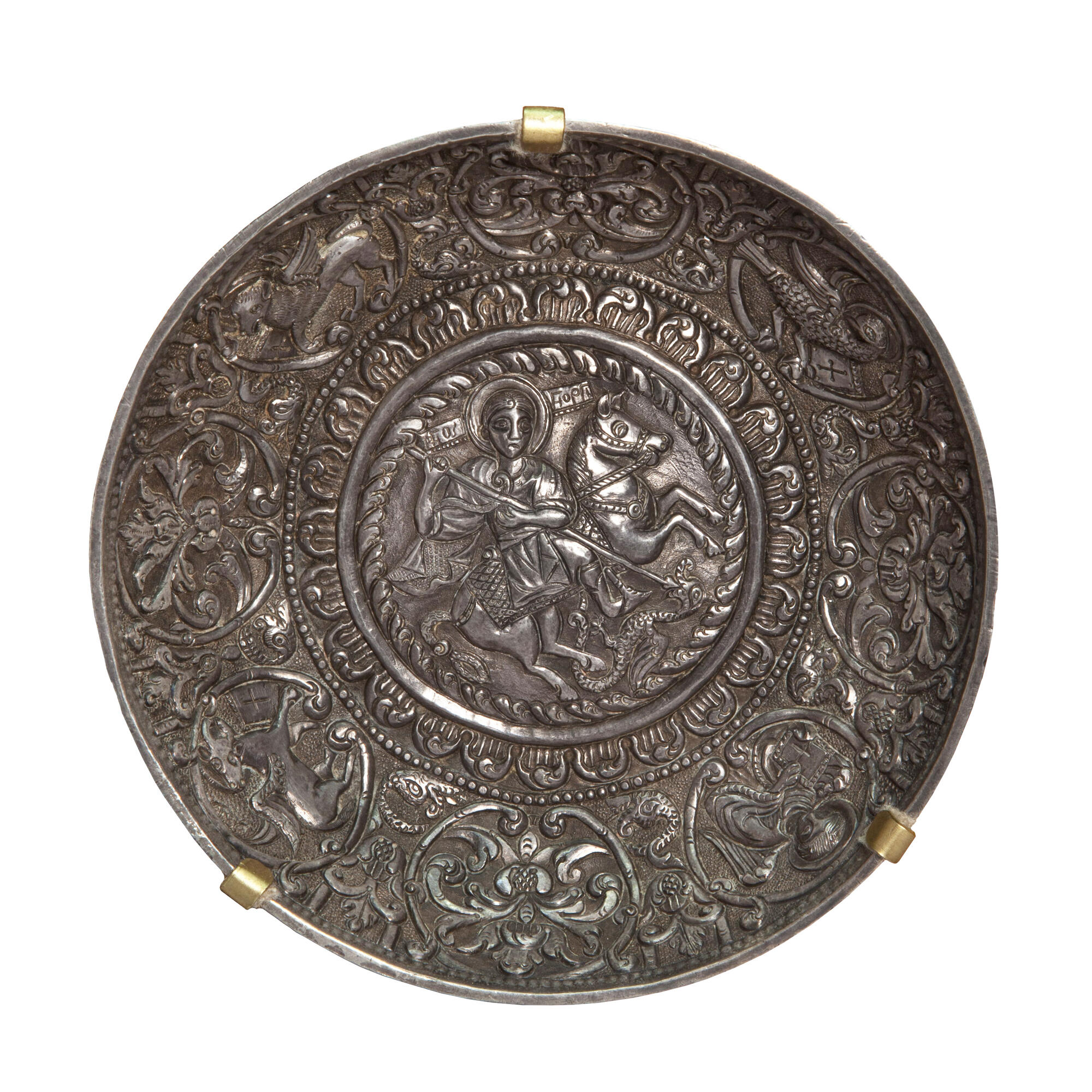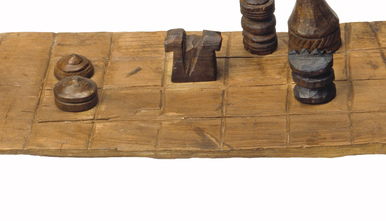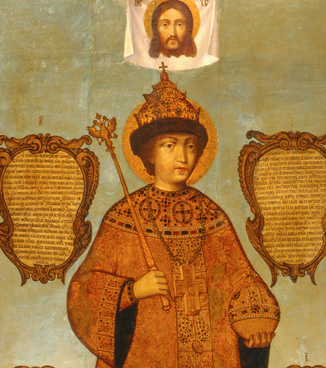The silver bowl displayed in the State Historical Museum belonged to Prince Yury Dmitriyevich of Zvenigorod and Galich, the third son of Dmitry Donskoy. In some sources Yury is called George: in the medieval times in Russia these were different forms of the same name.
The bowl was shaped by cold forging: a sheet of metal was tapped with a special hammer with a felt-padded head that did not leave scratches on the surface. The workpiece gradually changed shape under the blows and became concave. This method differed from forging in that the metal was not heated before hammering.
On the inner surface of the bowl one can see a chased ornament: the symbols of the four evangelists — John, Mark, Luke and Matthew — and elaborate floral patterns. At the bottom, a warrior on horseback strikes a dragon with a spear: this is how St. George the Victorious was traditionally depicted. He was considered the heavenly patron of Prince Yury Dmitriyevich. Next to the rider’s head is an inscription in Greek, which means “Saint George”.
The bowl was discovered in 1850 in the ruined fortifications of the Mikulino settlement. In the 14th — 15th centuries, this settlement was the center of one of the largest appanage principalities in the Tver territories.
Yury Dmitriyevich was considered one of the most talented military leaders of his time. He did not suffer a single defeat in battles with nomadic tribes. Under his command, new military fortifications appeared in Galich and Zvenigorod. He also ordered the construction of cathedrals in the towns. These churches were painted by the legendary Russian icon painters Andrei Rublev and Daniel Chorny.
In 1433 and 1434, Yury Dmitriyevich became the Grand Duke of Moscow twice. During his reign, the minting of coins with the image of St. George and the dragon, which he strikes with a spear, began in Moscow. However, the prince did not rule for long: he died in June 1434, and his eldest son Vasily, nicknamed Kosoy, became the heir. He ruled Moscow for only one month, and then fled to Mikulino from the troops of Prince Vasily the Blind (Vasily Tyomny). Vasily Kosoy probably took his father’s belongings with him, including the silver bowl.
The bowl was shaped by cold forging: a sheet of metal was tapped with a special hammer with a felt-padded head that did not leave scratches on the surface. The workpiece gradually changed shape under the blows and became concave. This method differed from forging in that the metal was not heated before hammering.
On the inner surface of the bowl one can see a chased ornament: the symbols of the four evangelists — John, Mark, Luke and Matthew — and elaborate floral patterns. At the bottom, a warrior on horseback strikes a dragon with a spear: this is how St. George the Victorious was traditionally depicted. He was considered the heavenly patron of Prince Yury Dmitriyevich. Next to the rider’s head is an inscription in Greek, which means “Saint George”.
The bowl was discovered in 1850 in the ruined fortifications of the Mikulino settlement. In the 14th — 15th centuries, this settlement was the center of one of the largest appanage principalities in the Tver territories.
Yury Dmitriyevich was considered one of the most talented military leaders of his time. He did not suffer a single defeat in battles with nomadic tribes. Under his command, new military fortifications appeared in Galich and Zvenigorod. He also ordered the construction of cathedrals in the towns. These churches were painted by the legendary Russian icon painters Andrei Rublev and Daniel Chorny.
In 1433 and 1434, Yury Dmitriyevich became the Grand Duke of Moscow twice. During his reign, the minting of coins with the image of St. George and the dragon, which he strikes with a spear, began in Moscow. However, the prince did not rule for long: he died in June 1434, and his eldest son Vasily, nicknamed Kosoy, became the heir. He ruled Moscow for only one month, and then fled to Mikulino from the troops of Prince Vasily the Blind (Vasily Tyomny). Vasily Kosoy probably took his father’s belongings with him, including the silver bowl.



